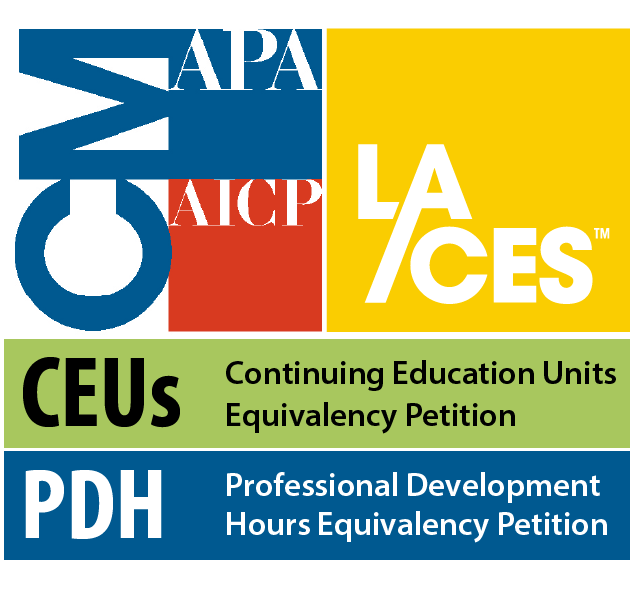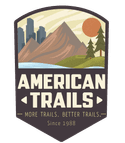This webinar will provide some basic information on trails in federally-designated Wilderness, examples of practical experiences, and resources to learn more.
Presented by:
Pete Irvine, retired, USDA Forest Service
Dan Abbe, Wilderness Specialist, Arthur Carhart National Wilderness Training Center
Ian Nelson, Regional Representative, Pacific Crest Trail Association
Webinar Outline
In total, approximately 18% of federal land administered by the four major federal land management agencies, and nearly 5% of all land in the United States, has been designated as wilderness. Trails are a primary way that visitors enjoy and experience these special places— where humans are visitors who do not remain. While the word “wilderness” may have very different meanings to each of us, federally-designated “Wilderness” has an official definition and the agencies have legal stewardship responsibilities which impact how trails are planned, constructed, managed, maintained, and used in these areas. Three presenters will provide some basic information on Wilderness, trails in Wilderness, examples of practical experiences, and resources to learn more.
Learning Objectives:
Provide basic Wilderness information including the Wilderness Act, the designation process, the amount-extent-variety of Wilderness, and the priorities for Wilderness stewards (agencies, partners, and volunteers).
Provide basic information and considerations for trails and trail use in Wilderness.
Provide some recent, real-life examples of Wilderness trail maintenance, management, construction, and administration situations in Wilderness.
Provide information on available resources for information about Wilderness and Wilderness trails.
Webinar Resources
Arthur Carhart National Wilderness Training Center
Home Page
Staff Listing (2022) (pdf)
Brief (October 2022) (pdf)
Training
Information
Education
Wilderness Connect
Home page
Trail Condition Monitoring Toolbox
Visitor Use Management Toolbox
Interagency Visitor Use Management Council
Signs and Posters Toolbox
Traditional Tools & Skills Toolbox
Traditional Tools; Crosscut Sawyer Online Course
National Wilderness Skills Institute Recordings
2021 & 2022
National Trails System Act
Presenter PowerPoint Presentation
Wilderness Trails: Special Places, Special Considerations-20221201-PeteSlides-Final.pdf (pdf)
Wilderness Trails: Special Places, Special Considerations-20221201-DanSlides-Final.pdf (pdf)
Pacific Crest Trail Association (PCTA) Resources
PCTA Homepage
PCTA Interactive Map
Native Lands Digital
Partnership for National Trails System (PNTS)
PNTS Indigenous Mapping
Interagency Visitor Use Mgt Council
National Wilderness Stewardship Alliance
Society for Wilderness Stewardship
Trail Competencies
-
Trail Construction
- • Construction Specifications
- • Hand-Built Trail Construction
- • Water Management/Drainage Features
-
Trail Maintenance
- • Maintenance Specifications
- • Tread Maintenance - Hand tools
- • Drainage Features/Water Management
-
Project Planning and Design
- • Define Purpose, Need, and Feasibility of Project
- • Stakeholder Engagement
- • Land Use Plan Alignment
- • Corridor Planning
- • Trail Specifications
- • Field Design: Trail Alignment Identification and Marking
- • Trail Plan Development
- • Compliance and Permitting
- • Implementation Plan
- • Interpretation
-
Program Administration
- • Education and Public Outreach
- • Inspections/Monitoring
- • Visitor Use Management
- • Policy/Directives/Law
- • Partnership and Collaboration
- • Agreement Development
Relevant Trail Types
Learning Credits and CEUs

Learning credits will be available to attendees and are included in the registration fee. The length of the session will determine the number of hours/credits given. In order to obtain credits, attendees must fill out an evaluation survey for each session they attend, as well as complete a learning credit tracking form noting each session they are requesting credits for (or a quiz if virtual). This form (and complete instructions) will be available online as well at registration. Email the conference host or [email protected] with any questions.
American Trails is a certified provider and can offer the following learning credits and continuing education opportunities: AICP CM, LA CES (most HSW approved), NRPA CEU Equivalency Petition, and CEU/PDH Equivalency Petition for other accepting organizations.
You may also like
Related Upcoming Trainings
This training has been viewed 569 times.
